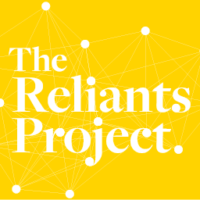Podcast: Play in new window | Download
In this episode, I speak with Karsang Tamang. We met when he approached me at Bamboo Lodge in the Langtang valley of Nepal and convinced me to hire his father as a porter. His father was a fantastic guide and I had the opportunity to meet his mother and other relatives in their village, Thulo Syafru. Karsang and his family grew up relatively poor by Nepalese standards. Eventually they had enough money for his father to build a house on land he inherited from his father. It’s at the intersection of two popular trekking routes north of Kathmandu near the Tibetan border.
On April 25th 2015 a 7.8 magnitude earthquake struck Nepal, which was the deadliest in over 80 years. This terrible natural disaster killed almost 9k, injured 22k and made an estimated 3.5M people homeless. Near Karsang’s village in Langtang valley, it triggered an avalanche burying an entire village. Most of the buildings in Thulo Syafru were also destroyed.
In this episode we talk about:
- What village life is like in rural Nepal
- What happened to him and his family when the earthquake struck
- He explains how people in the community organised themselves in the hours, days, and weeks following the disaster
- He shares the important role that foreign connections played during that time
- He also shares how the community has changed as a result of this event
SHOW NOTES
- Some of the challenges of rural life in Nepal [2:38]
- Main economic activities of Thulo Syafru [3:30]
- A glimpse into what Thulo Syafru looks like today [5:04]
- Saving money to build a house in this village [5:45]
- Generations of families living in this rural village [6:28]
- Where Karsang and his family were when the earthquake struck [7:47]
- The impact of the earthquake on the village of Thulo Syafru [9:28]
- How the tourists and locals worked together immediately after the earthquake [10:27]
- How people in the village organised themselves in the days after [11:45]
- A clever way to minimise disputes between families [12:37]
- The role of foreign friends in supporting the villagers after the disaster [14:02]
- Tensions that arise around donated money [15:02]
- Returning to individual households a week after the earthquake [15:42]
- Role of the village leader [17:06]
- How socio-economic class impacted the speed at which a family could rebuild [18:12]
- What does Thulo Syafru look like today? [18:50]
- “Nothing is impossible” – how his family reflects on the experience [20:32]
- People with access to foreign networks were able to get resources [21:36]
- Some simple advice, “help eachother…after we die we go alone, we can’t take anything else” [23:07]
SELECTED LINKS

